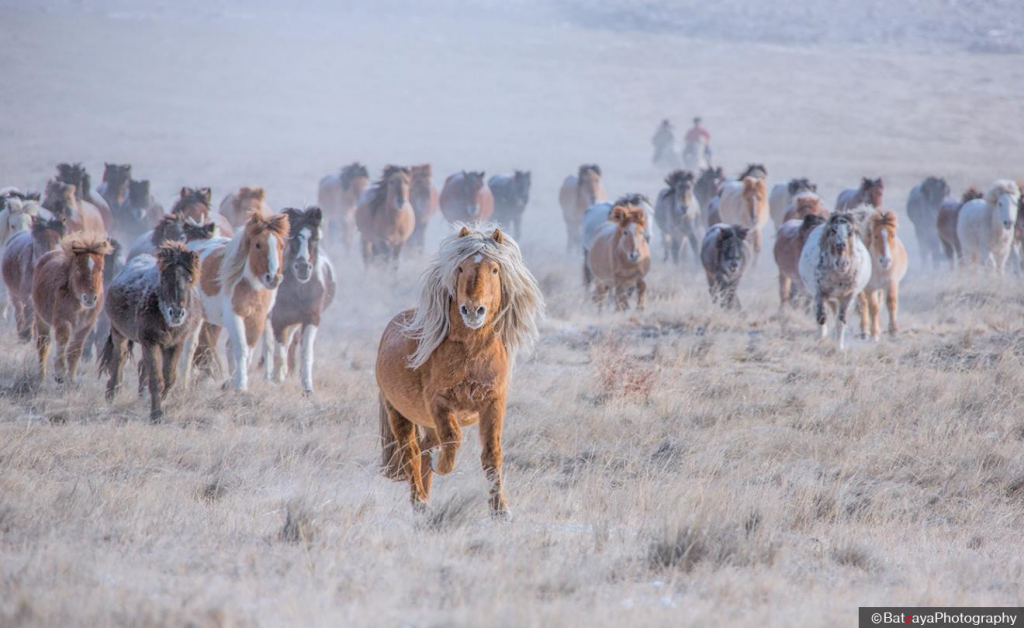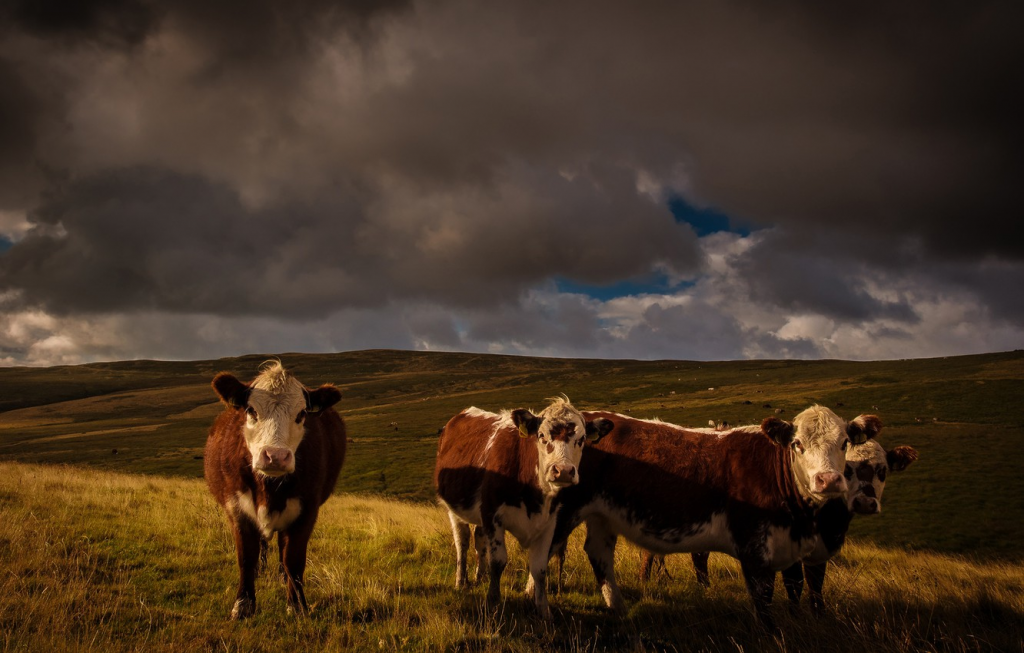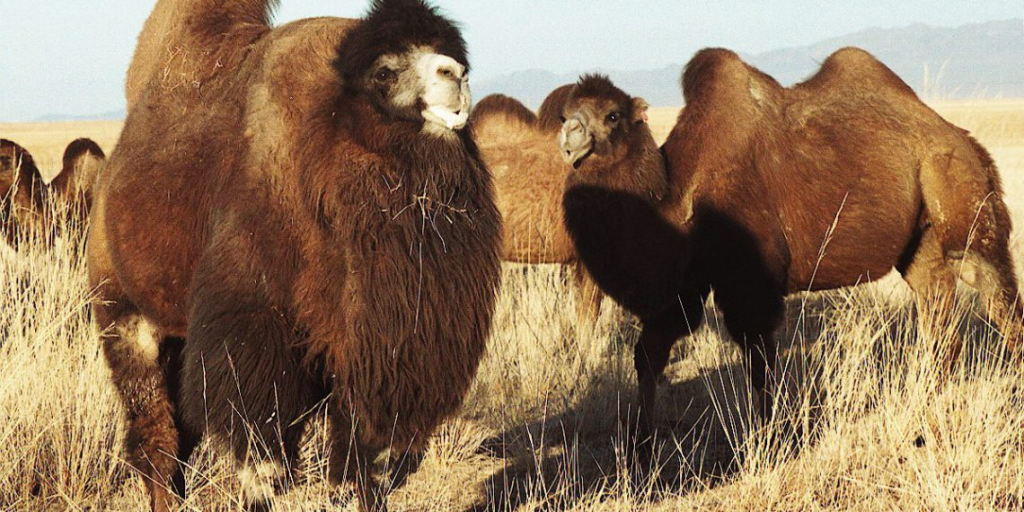Five-headed cattle is a general name for horses, cattle, camels, sheep, and goats that have been domesticated and raised by Mongolians since ancient times. As the main livelihood of the Mongolian people has been animal husbandry since ancient times, Mongolians highly respect their five-pointed animals, and the five-pointed animals are also known as the five treasures. Horses, cows and camels are called big animals, and sheep and goats are called small animals. As a result of long-term natural selection in the extreme and ecological conditions of the mainland, as a result of the selective breeding of the people through many centuries of animal husbandry, local Mongolian animals have adapted to the harsh natural and climatic conditions and have preserved special biological characteristics. Mongolian cattle have a tradition of grazing in the four seasons of the year, multiplying and giving benefits. Their features and characteristics.
Horse
10 percent of the total livestock products of our country, 10.4 percent of meat or 34.5 thousand tons, and 7.0 percent of milk or 8.0 million liters are produced from horse breeding. An adult Mongolian horse weighs 360-380 kg, but if it is well fatted, it can weigh more than 400 kg. The slaughter yield of Mongolian horse meat is 52-56 percent, calories are 2886-3000 kcal, horse fat is rich in unsaturated fatty acids, and is effective against diseases such as high blood pressure and hardening of the blood wall. A mare’s udder is 7.5 liters in summer. An average of 1.0-1.2 million tons of fermented milk is produced annually, which has high therapeutic value. An average of 42.5 thousand tons of horse meat is prepared annually, 12.0 thousand tons are processed by industrial methods, and 2.7 thousand tons of meat are exported. Mongolia has about 3.0 million horses, including the Tes, Darkhad, and Galshar tribes, and they differ in size, shape, endurance, speed, and productivity.

A Cow
Depending on the natural, geographical and ecological conditions of our country, cattle are distributed in 27.6% in high mountains, 25.2% in forests, 28.8% in steppes, and 12.5% in Great Lakes. 5% in depressions, Altai region and Gobi region. Mongolian cattle have small, light heads, wide foreheads, narrow noses, and no nape. Mongolian cattle are mostly red in color, but dark brown and purple with black edges. A Mongolian cow can give 750-800 liters of milk with 4.36 percent fat content in 180 days of lactation. In recent years, 66.9-113.6 thousand tons of beef have been produced and 12.9-14.0 thousand tons of beef have been exported annually. Our country has 3.4 million cattle, and in addition to local Mongolian cattle, we breed cattle of the Eastern and Selenge breeds, as well as Hainag. In addition, there is a herd of dairy cattle, such as the imported and bred Black Tarlan, Taly red mixed Alatau, and Simmental. Also, in recent years, the private sector has been importing cows with high milk and meat productivity from abroad.

Sheep
Mongolian sheep are short-bodied, thick wool, cashmere, sorghum, intercalary, and goat hair. The main yield of Mongolian sheep is slaughter weight 23.51 kg, meat yield is 48.12% with good taste. Mongolian sheep give 297 kg of milk, 6.35% of total dry matter and more than 70% of protein and fat in 30-45 days or in June-July. Protein is 92.69 percent rich in amino acids. Currently, there are 23.2 million sheep in the country, thick and thick wool, our Mongolian, Baidrag, Bayad, Gobi-Altai, Uzemchin, Sartuul, Barga breeds, Darkhad, Sutai breeds, part of the Tamir pelican breed, rump-tailed Kerey breed, Torgud breed. “Breeding part”, “Altanbulag” breeding part, “Hangai”, “Orkhon”, fine wool. “Tal tuho siiim” breed, “Yero” breed, “Jargalant” breed, and “Sumber” breed are breeding sheep with curly skin.

Goat
Mongolian goats have a good fattening ability in pastures, and fat goats weigh 55-58 kg, female goats weigh 37-41 kg, toothed goats weigh 35-38 kg, and female goats weigh 29-31 kg. Cashews 240 g, female goats 200-230 g, male goats 240-380 g. Mongolian goats give 50-60 liters of milk during 7 months of milking, of which 20-30 liters can be milked for food. On average, milk solids are 15.44%, total protein 3.87%, fat 5.81%, sugar 4.78%, and total minerals 0.89%. Our country currently has 22.0 million goats, and in addition to Mongolian goats, there are three beautiful breeds of Gobi, Uul brown breed, part of Altai red breed, part of Onjuul breed, white of Zalaa Jinstite, Engin, Bayandelger red, Buural and Ulgin red.

Camel
Since 1200-1700 years before our era, two-humped camels lived in Central Asia, and wild camels still live in the Altai valleys of our country. The specialty of the Mongolian camel is that it alone can provide wool, meat, milk, skin, leather, and work ability that can be obtained from other types of animals in the Gobi region. Almost 70 percent of all camels in the country are located in the Gobi region, which occupies 41.7 percent of the vast territory of our country. The number of Mongolian camels reached a maximum of 895.3 thousand in 1954, while at the end of 2014 it was 350.0 thousand. Among the Mongolian camels, there are Galb Gobi red, Khan Khatsi brown, and Tokhum Tsap breeding section, which have special differences in husbandry and biology.


